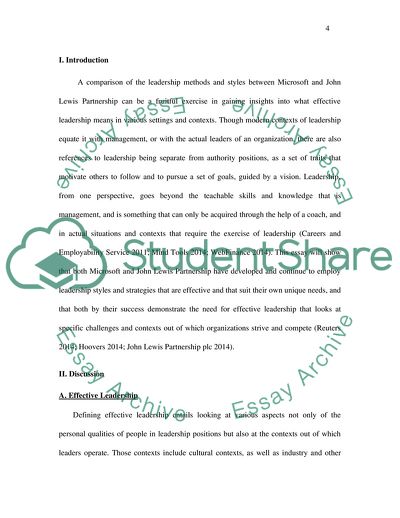Cite this document
(Microsoft and John Lewis: Comparison of Leadership Coursework Example | Topics and Well Written Essays - 1500 words, n.d.)
Microsoft and John Lewis: Comparison of Leadership Coursework Example | Topics and Well Written Essays - 1500 words. https://studentshare.org/human-resources/1814085-compare-and-contrast-microsofts-leadership-chosen-company-and-john-lewiss-leadership-preferred-company-in-the-uk
Microsoft and John Lewis: Comparison of Leadership Coursework Example | Topics and Well Written Essays - 1500 words. https://studentshare.org/human-resources/1814085-compare-and-contrast-microsofts-leadership-chosen-company-and-john-lewiss-leadership-preferred-company-in-the-uk
(Microsoft and John Lewis: Comparison of Leadership Coursework Example | Topics and Well Written Essays - 1500 Words)
Microsoft and John Lewis: Comparison of Leadership Coursework Example | Topics and Well Written Essays - 1500 Words. https://studentshare.org/human-resources/1814085-compare-and-contrast-microsofts-leadership-chosen-company-and-john-lewiss-leadership-preferred-company-in-the-uk.
Microsoft and John Lewis: Comparison of Leadership Coursework Example | Topics and Well Written Essays - 1500 Words. https://studentshare.org/human-resources/1814085-compare-and-contrast-microsofts-leadership-chosen-company-and-john-lewiss-leadership-preferred-company-in-the-uk.
“Microsoft and John Lewis: Comparison of Leadership Coursework Example | Topics and Well Written Essays - 1500 Words”. https://studentshare.org/human-resources/1814085-compare-and-contrast-microsofts-leadership-chosen-company-and-john-lewiss-leadership-preferred-company-in-the-uk.


